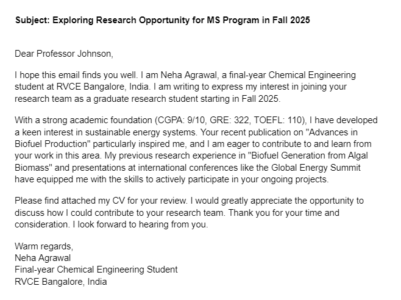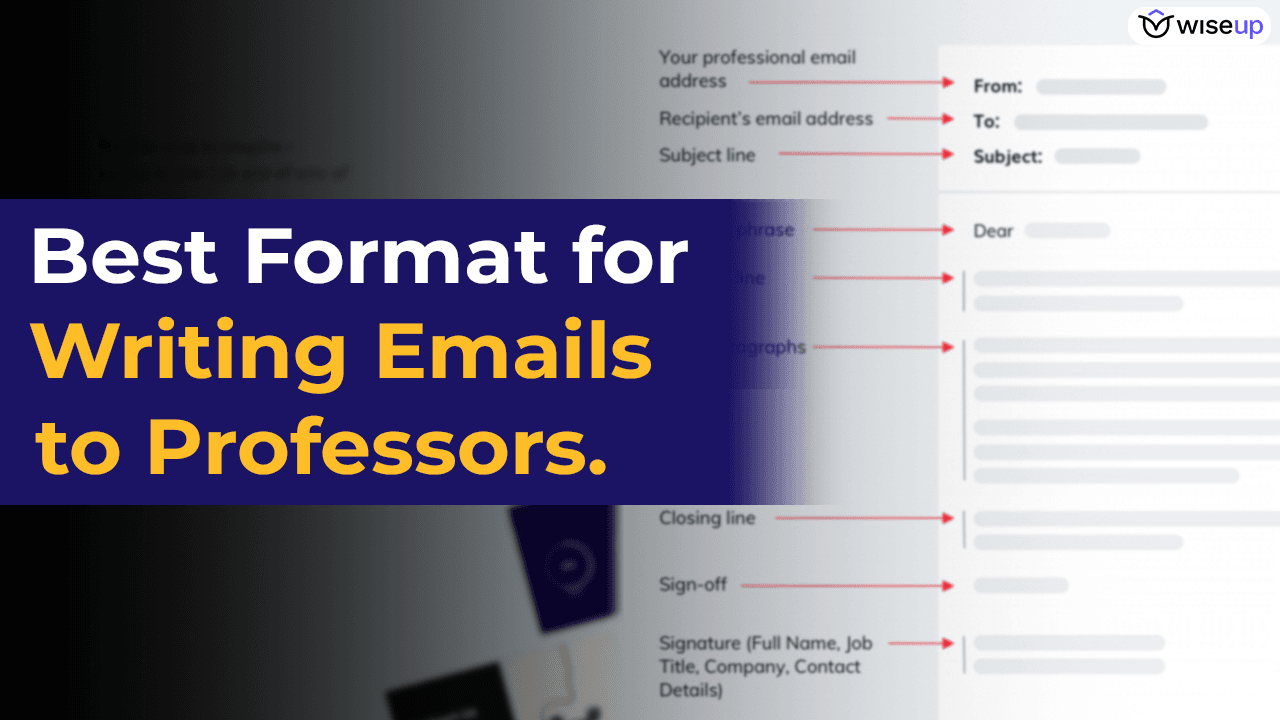Securing a research position via email can be tough, especially when you’re not getting responses. So, how do you write the perfect email to professors to stand out? I’m Neha Agrawal, Founder of WiseUp Communications. I successfully landed research positions at NTU Singapore and Georgia Tech by emailing professors. In this blog, I’ll share a simple format to help you write emails to professors that get results!
1. Subject Line
The subject line is the first thing a professor sees, so it needs to be concise and clear. A good subject line immediately communicates the purpose of your email.
For example: Subject: Exploring research opportunity for MS program in Fall 2023.
This subject provides key information: you’re applying for a research position, for an MS program, and you’re planning to join in Fall 2023. Customise your subject line to fit your specific goals.
2. Addressing the Professor
Always personalise your greeting. Address the professor by their name to show that your email is not part of a bulk send.
For example: Dear Professor Smith
This small detail demonstrates that you’ve taken the time to write to them specifically, increasing your chances of a response.
3. Introduction
Start by introducing yourself and clearly stating the purpose of your email.
For example: “I am Neha Agrawal, a final-year Chemical Engineering student at RVCE Bangalore, India. I am writing this email to explore an opportunity to work as a graduate research student under your guidance starting Fall 2023.”
This establishes who you are and why you’re reaching out.
4. Body of the Email
This is the most crucial part of your email and can determine whether you get a reply. There are three main sections to cover:
1. Qualifications:
Outline your academic background, including CGPA, GRE/TOEFL scores, research projects, and any published papers or conferences attended. This demonstrates that you are qualified for the role.
2. Research Interests:
Link your research interests to the professor’s work. Mention specific papers they’ve published that you’ve read and discuss what you liked or any questions you have about their research. This shows you’ve done your homework and are genuinely interested in their work.
Pro Tip:
The more tailored your email is to the professor and their research, the higher your chances of receiving a response.
To know more about this in detail, check out the video below:
5. Conclusion
End your email by thanking the professor for their time, attaching your CV, and providing a clear call to action.
For example: “Please find attached my CV for your perusal. Thank you for your time and consideration. I look forward to hearing from you about my candidacy.”
6. Email Signature
Include a professional email signature with your name, designation, college, contact details, and, if relevant, your LinkedIn profile.
7. Final Tips
With this template, you can send out personalised emails to multiple professors, customising the body as needed. As a reference, I sent out around 50 emails and received 5-7 responses, with 2 professors eventually accepting me. Following this structure will give you a solid chance of success.
BONUS Sample Email
Have a look at a sample email that you can send to professors to apply for research positions in different universities:

For more guidance on writing a Statement of Purpose or Letters of Recommendation, or if you want to see more examples of successful emails, you can join my Study Abroad Course | WiseUp. Good luck with your journey!




